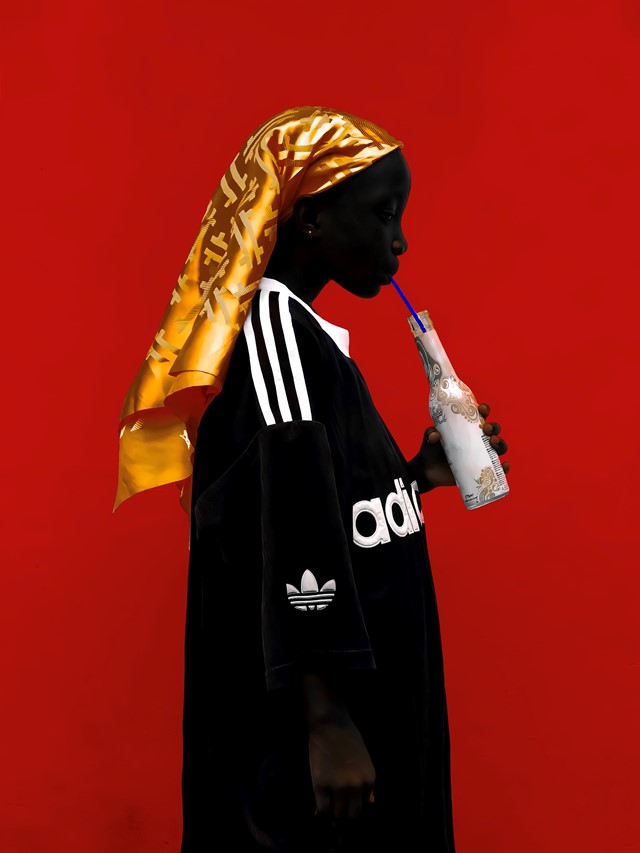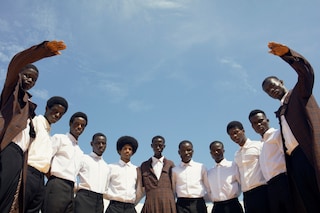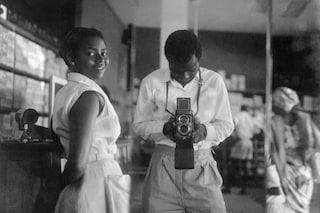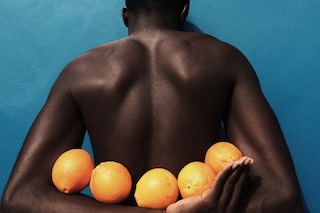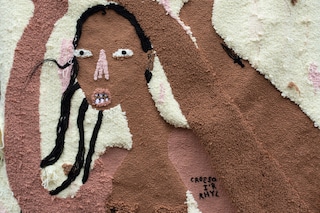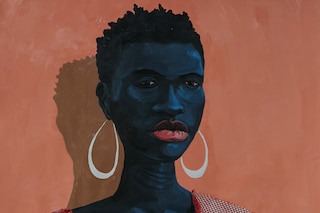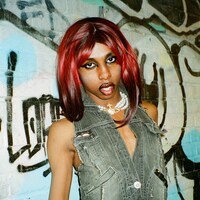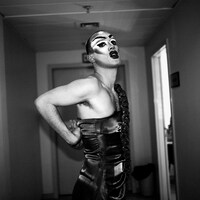Manju Journal’s debut book, Voices: Ghana’s Artists in Their Own Words, celebrates modern African art and creativity
“There’s nothing new about Ghanaian art. What we see today has been there in the past,” says Richmond Orlando Mensah, founder and artistic director of Manju Journal whose debut book Voices: Ghana’s Artists in Their Own Words is newly published by Twentyfour Thirtysix. As the title suggests, the book is a self-defining account of Ghanaian artists. Featuring over 80 exclusive interviews with artists, curators and gallerists working today in the country and as part of the diaspora, the book includes names such as James Barnor, Zohra Opoku, Campbell Addy, Na-Chainkua Reindorf, Ekow Eshun, Anya Paintsil, Osei Bonsu and Kesewa Aboah. “Craft is art here, the way we weave is art, the way we express ourselves is art. If you learn about the Adinkra symbols and the language we created – that’s art too,” he explains. “That’s been the case for hundreds of years, now it’s just most obvious in terms of the contemporary art world.”
Since 2015, when Mensah first founded Manju Journal, the Ghana-based pan-African digital platform and creative studio has sought to celebrate contemporary Africa at the intersection of fashion, photography, art and culture. “Ghanaian art is deeply rooted in its diverse cultural heritage, reflecting traditional beliefs, values and history,” Mensah tell us. “From intricate Kente cloth weaving to symbolic Adinkra symbols, and expressive drumming and dance forms. Ghanaian art is a celebration of community, spirituality and the richness of the country’s past.” For Manju Journal, what links both its curation and commissioned work is a devotion to representing those of African ancestry, creating contemporary art that blends traditional motifs with modern techniques and pursuing to capture the essence of Ghana’s cultural and historical tapestry.
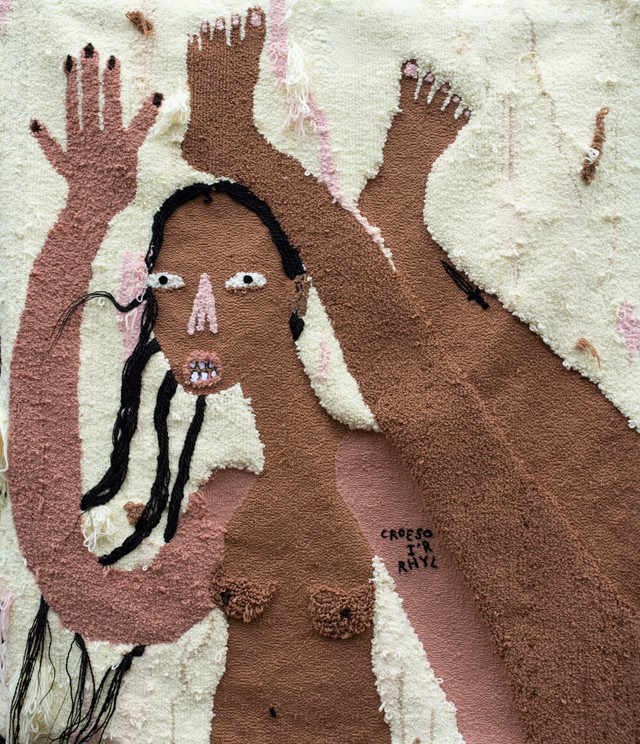
When early European colonisers first brought back art from African continent, they regarded it as curiosities to be studied separately from the artists themselves, leaving them unnamed and uncredited. Mensah tells us that the creativity of Ghana has “played a significant role in shaping global cultural trends and continues to inspire and captivate people around the world”. Handing the narrative back to African artists allows them to be intentionally seen as the vanguard. “Presenting African art through the lens of African people is very important for honoring the authentic narratives, cultural nuances, legacies and historical significance embedded within the artworks,” he tells us. The book is also created with the guiding principle of fostering “a deeper understanding and appreciation of the complexities and diversity of African artistic expression, allowing for a more inclusive and respectful portrayal of the continent’s artistic contributions”.
All of the artwork featured spans a range of styles and techniques, from sculpture and textiles to photography and fine painting. “We spoke to digital artists, illustrators, sculptors, fabric designers, ceramicists. Even though the book is made up of individual artist interviews, we wanted to thread the idea of their community throughout the book. Through the artists’ own words and experiences, you can really understand what’s going on here now. Because when you speak to a Ghanaian artist, they’ll spend half their time talking about other artists, other friends and colleagues, about other exhibitions they’ve seen. The sense of community is incredible, the way people work, collaborate and help each other.”
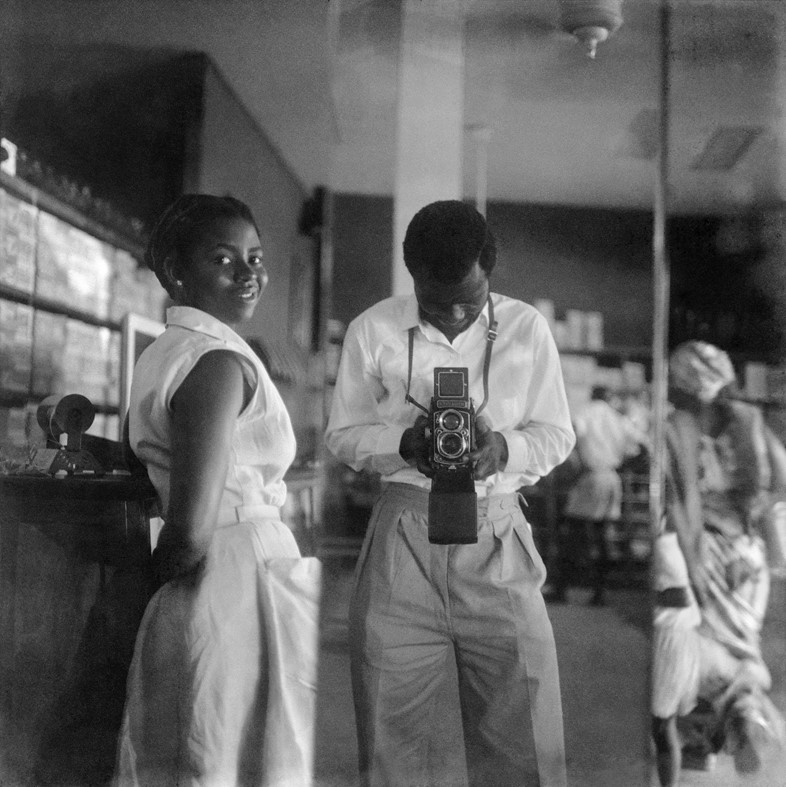
2019 was deemed ‘The Year of Return’ in Ghana, based on a government initiative to reach out to the diaspora and invite them back to visit and invest. On a popular culture level, there was a huge boost for the country, receiving the level of international exposure that came alongside the campaign. However, this cultural flourishing and raising the volume for the voices of Ghanaian artists seems to run much deeper than one initiative. “The future for African art and photography is great,” says Mensah. “We can already see the sudden renaissance and attention African creatives are getting at the moment. From pioneer photographer James Barnor who has paved the way for so many amazing talents, to Ablade Glover being an inspiration to so many new generational artists. There’s more to do but I think the future is bright and this is why we are documenting these talents through our book Voices.”
“We would love this book to help push modern African art and creativity from being ordered to being completely mainstream. It’s a total celebration of a very beautiful time and community.” Now, rather than artist and the community alike grappling with issue of ‘how does the world see us?’, the greater question emerging and ever evolving is ‘how do we see ourselves in relation to the world?’ Perhaps in itself a legacy of gaining independence, amplifying a shared belief in the creative potential of a land and people.
Voices: Ghana’s Artists in Their Own Words is published by Twentyfour Thirtysix and is available now.
Join Dazed Club and be part of our world! You get exclusive access to events, parties, festivals and our editors, as well as a free subscription to Dazed for a year. Join for £5/month today.
